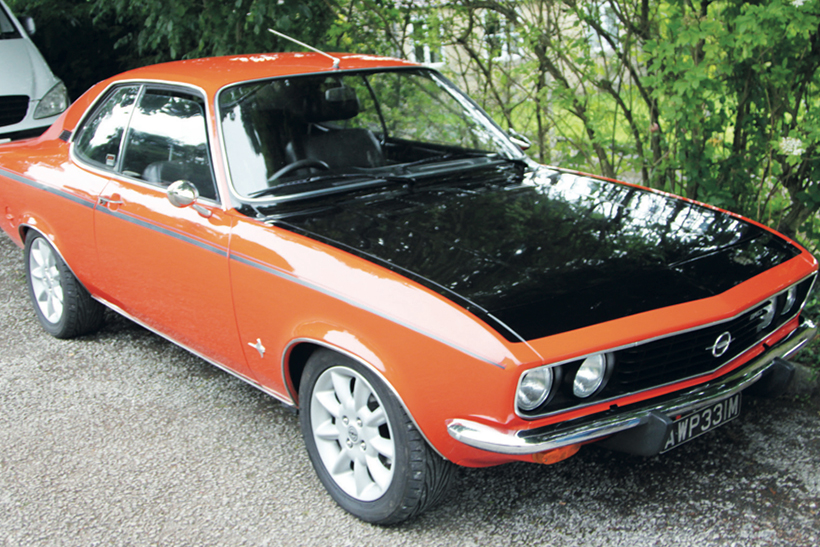As the classic car MoT testing debate rumbles on, historic vehicle lobbyists worry about the three letters that could be the undoing of our hobby as we know it – VHI.
For the first time in British motoring history, the Department for Transport (DfT) wants to define which old cars become MoT exempt in 2018; other testing options are available, but they all trace their qualification back to the DfT’s new Vehicles of Historic Interest (VHI) status – and determining that is causing headaches for the Federation of British Historic Vehicle Clubs (FBHVC).
New MoT regulations for old and new vehicles will be determined by compliance with the European Union’s Roadworthiness Testing Directive – and in
the worst case scenario, modified classics (regardless of which cut-off date is decided) may not qualify for VHI testing status (whatever option is eventually chosen).
Enforced to the letter, a car the DfT decides is ‘substantially altered’ may end up having to take a modern car MoT test – something an older vehicle stands little chance of passing. “Can you imagine trying to get a De Dion Bouton through an MoT today?” FBHVC communications director Geoff Lancaster asked us. Of course, veteran cars are exempt from current MoT tests under current pre-1960 waivers – but Geoff’s point still stands. Trying to get a 40-year old classic through the post-2018 MoT (from May that year, when new legislation comes into force) would be as difficult as getting a roadworthiness certificate for Geoff’s hypothetical De Dion Bouton in the present day.
Differences in car culture have seen difficulties in applying the EU Roadworthiness Directive framework to British MoT testing. Not only do we disagree on the working definition of ‘original specification’, we also diverge from Europe in terms of when we call classics ‘classics’. Both these factors are sticking points; both worry (and continue to worry) the Federation where the implementation of the EU Roadworthiness Directive is concerned.
European classic lobbying group Fédération Internationale des Véhicules Anciens (FIVA) set a cut-off date of 30 years rolling for historic vehicles when tasked with identifying the classic cars from the ‘merely old’ for emissions zone purposes. The United Nations Educational, Scientfic and Cultural Organisation (UNESCO) also recognises this demarcation when appraising vehicles as historical artefacts.
The DfT prefers 40 years, to keep whatever MoT changes it implements in line with the DVLA’s rolling vehicle excise duty (VED) exemption. “We’ve never really had a formal definition of what a classic vehicle is apart from taxation purposes,” Geoff confirmed. “Aligning a revised MoT with this cut-off makes sense for ease of reference; although if we’re trying to conform to European regulations, the DfT could start by recognising its 30-year cut- off date – it would also help preserve more classics in waiting – those cars on the cusp of historic vehicle status.”
If age informs the VHI definition, so does originality. “Britons have been modifying cars from the 1920s onwards in different ways to motorists in Austria or Germany – the European countries whose frameworks of originality the EU Roadworthiness Directive is based on,” Geoff relayed. “Their legislation reflects decades of restricted use clauses and the idea of classics as weekend toys kept as close to manufacturer’s intentions as possible.”
On the other hand, many British classics were (and continued to be) modified for safety, performance or longevity, with modified or pattern parts. “The closest thing we have in legislation to recognise such changes is the DVLA’s eight-point rule system – and that’s wholly inappropriate to appraise whether a vehicle should be appraised as historic in the MoT bay”, rued Geoff.
The DVLA eight-point rule table was created to register limited production run vehicles without needing type approval. Its job was to give things like Sevenalike kit cars – vehicles built with bits of older vehicles – Q plates and get them on the road.”
“It would exclude cars like a Morris Minor MM from VHI MoT testing if a previous owner had added better brakes, radial tyres and changed the trafficators to flashers – and that’s the thin end of the wedge. Where do you draw the line?”
“Twenties cars were often bought as bare chassis and sent off to coachbuilders emerging with two different bodies depending on the season. They might have been updated to the point of getting a new registration in the mid Sixties to keep them on the road. The eight-point rule isn’t flexible enough to take things like this into account.”
The Federation would like to see a self- certification process for classic vehicles, where sensitive modification – for safety, performance or longevity – is taken into account.





